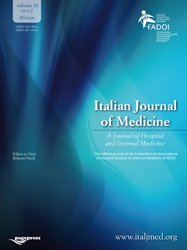The importance of the cardiology observation unit in the management of patients with cardiovascular diseases: a pilot project
All claims expressed in this article are solely those of the authors and do not necessarily represent those of their affiliated organizations, or those of the publisher, the editors and the reviewers. Any product that may be evaluated in this article or claim that may be made by its manufacturer is not guaranteed or endorsed by the publisher.
Authors
The intensive short observation (OBI) unit provides rapid diagnostic and therapeutic evaluations for patients in emergency-urgent conditions. Due to emergency department (ED) overcrowding, dedicated OBIs have been developed to improve care. As a pilot project, a cardiological OBI was established where specialist physicians manage patients, supported by nursing staff from the assigned unit. After observation, patients are discharged, hospitalized in cardiology, or transferred to other departments based on diagnostic needs. In 6 months, 107 patients were admitted to the cardiology OBI, with 85 (76%) discharged. Most admissions were for high-risk chest pain (55%), palpitations (30%), or suspected early-stage heart failure (15%). Notably, three patients were diagnosed with acute coronary syndrome after specialized evaluations for initially unclear symptoms. Preliminary results highlight the cardiological OBI’s effectiveness in reducing inappropriate hospitalizations, identifying complex cases early, and easing ED overcrowding. It met all performance goals, demonstrating the potential to optimize patient pathways and enhance diagnostic accuracy in challenging cases. Strengthening the cardiological OBI appears essential for addressing ED pressures and improving specialized patient care.
How to Cite

This work is licensed under a Creative Commons Attribution-NonCommercial 4.0 International License.
PAGEPress has chosen to apply the Creative Commons Attribution NonCommercial 4.0 International License (CC BY-NC 4.0) to all manuscripts to be published.






